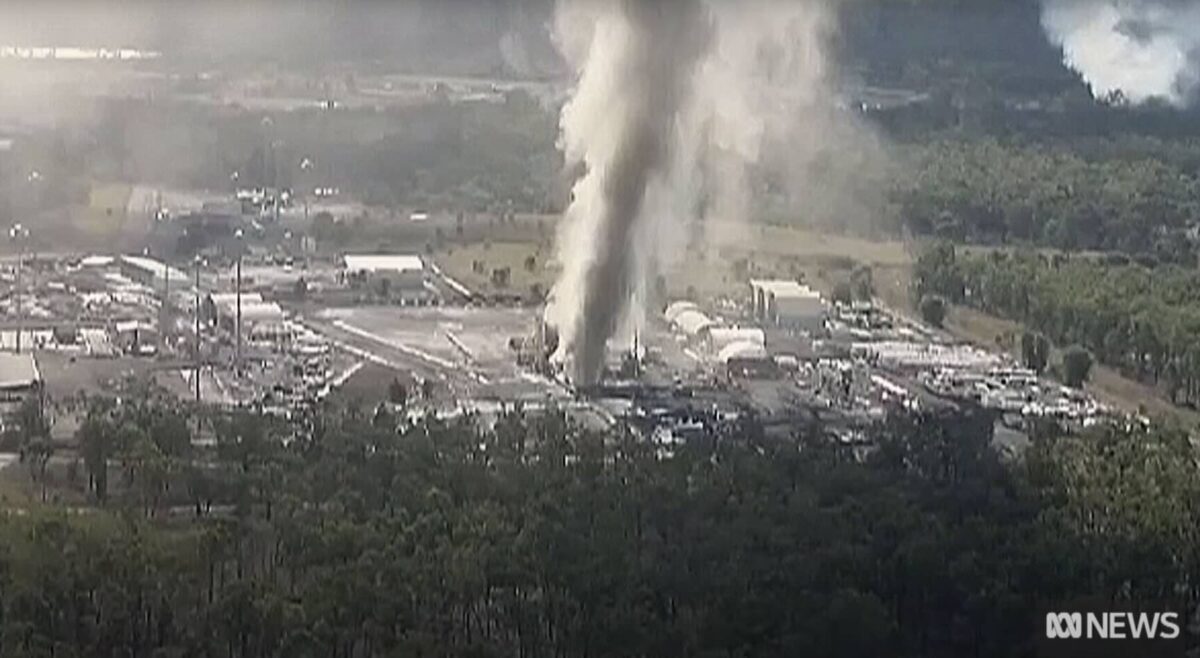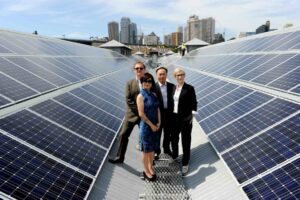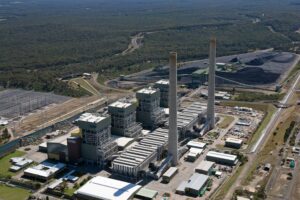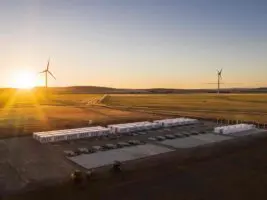This week, millions of Australians have been shocked by the ongoing gas fire burning at Grosvenor coal mine. The scenes of billowing smoke that have been burning for over a week, serve as a stark reminder of the inherent dangers Australian coal miners face everyday.
But for many who read the story from outside the mining sector, the idea that gas comes out of a coal mine might have been as shocking as the fire itself.
The reality is that methane is constantly being emitted from mines across the country. The potent greenhouse gas, released from within the coal seams, is as common to a coal mine as a dusty helmet and a hundred tonne truck.
In many coal mines where emissions are directly measured, methane makes up more than 75% of the mine’s total emissions, before the coal is shipped off and burned. This is also the case across open cut coal mines that have historically used state-regulated emissions factors to estimate their methane intensity.
However, not every open cut coal mine has followed these recommendations.
Since 2011, many open cut coal mines have taken up the option to drill into their coal mines, collect core samples and conduct their own emissions estimates. Under tight controls and with transparent reporting, this process should enable more accurate estimates at individual mines, especially in super gassy mines.
Overall though, the results across each state should align with state-regulated emissions estimates, which are based on averages and have been extensively revised every few years.
The results however are starkly different.
In a recently released analysis, we found that companies that have opted to undertake self-led estimates consistently reported their emissions much lower than state-based recommendations. Whatsmore, the overall trend points to millions of tonnes of emissions that have simply gone missing from our national inventory.
In some cases, such as the Carmichael mine in Queensland, the emission estimate developed in 2012 is now 135 times lower than the state-based recommendation.
In the case of Maules Creek coal mine in NSW, they are now reporting emissions up to 65 times lower than the NSW recommendation. This comes after shifting their reporting methodology from a state-based average to a mine-specific estimate in 2019. In the year prior, they were one of Australia’s highest emitting open cut mines.
These are not isolated incidents.
Our analysis identified that since the HVO mine in NSW switched from a state-based recommendation to a self-led estimate in 2016, they may have avoided reporting more than 5.5 million tonnes of greenhouse gas emissions (CO2-e).
When the Caval Ridge coal mine in Queensland adopted the same methodological approach more recently, the mine’s emissions reporting dropped by close to half a million tonnes of CO2-e per year.
This is also the same case in Mt Arthur in NSW, which is currently reporting 1.2 million tonnes of CO2-e less each year, compared to if they followed the state-based recommendation.
Collectively, our analysis suggests that these four mines alone would have likely reported close to 2.8 million tonnes of CO2-e more last year, if they utilised state based emissions factors.
What our analysis didn’t find, is transparent reporting of coal mines using this estimation methodology to currently report emissions higher than state-based averages in either Queensland or NSW.
When you consider that Queensland regulators reviewed over 1,000 samples in the last few years as they updated their state emissions factor, the considerable lack of balance in the reporting we analysed made us question how these mine-led estimates could ever compare to state based averages.
While there are signs that a few mines may be reporting emissions slightly higher than the state emissions factor, the scale is nowhere near as significant, and the reporting transparency is just not clear enough to know for sure.
That is why we were shocked yesterday when the Federal government confirmed that it is planning to expand unverified, company-led emissions estimates across the country. What’s more, the shift is currently outlined without any additional requirements for external verification, peer review or transparent reporting.
This comes just over six months after the Climate Change Authority warned that this self-led reporting methodology needed to be urgently reviewed, due to the risks of selective sampling by coal miners, and significant uncertainties surrounding the results.
Due to the lack of transparency across the sector, the extent of how many coal mines will now switch their reporting approach, and how much reporting may change overnight is unclear.
However, the track record identified in our analysis suggests that millions of tonnes of CO2-e may now be at risk of simply vanishing from our national inventories, without any actual mitigation action taken by the coal sector.
It will also transform emissions reporting under the Safeguard Mechanism. Companies undertaking this shift could now be eligible for hundreds of thousands of tonnes of additional Safeguard credits, without taking any action. They could also potentially use those credits to offset directly reported emissions increases in underground mines, at no cost.
While the government has yet to formally respond to the suite of recommendations made by the Climate Change Authority, this first step since their review could have a severe impact on the integrity of our emissions inventory in the short term.
There is still a critical opportunity to review this shift. The Climate Change Authority effectively laid out a transition roadmap that could put the coal sector well on the way towards direct, verifiable methane measurement, and make Australia a global leader in this emerging space.
In reality, a continuous measurement approach that combines top-down and bottom-up measurements is the only real way of knowing just how much methane is coming out of our coal mines.
An unverified, self-led emissions estimate alone, just doesn’t pass the pub test.
Chris Wright is Climate Strategy Advisor with energy think tank Ember.








